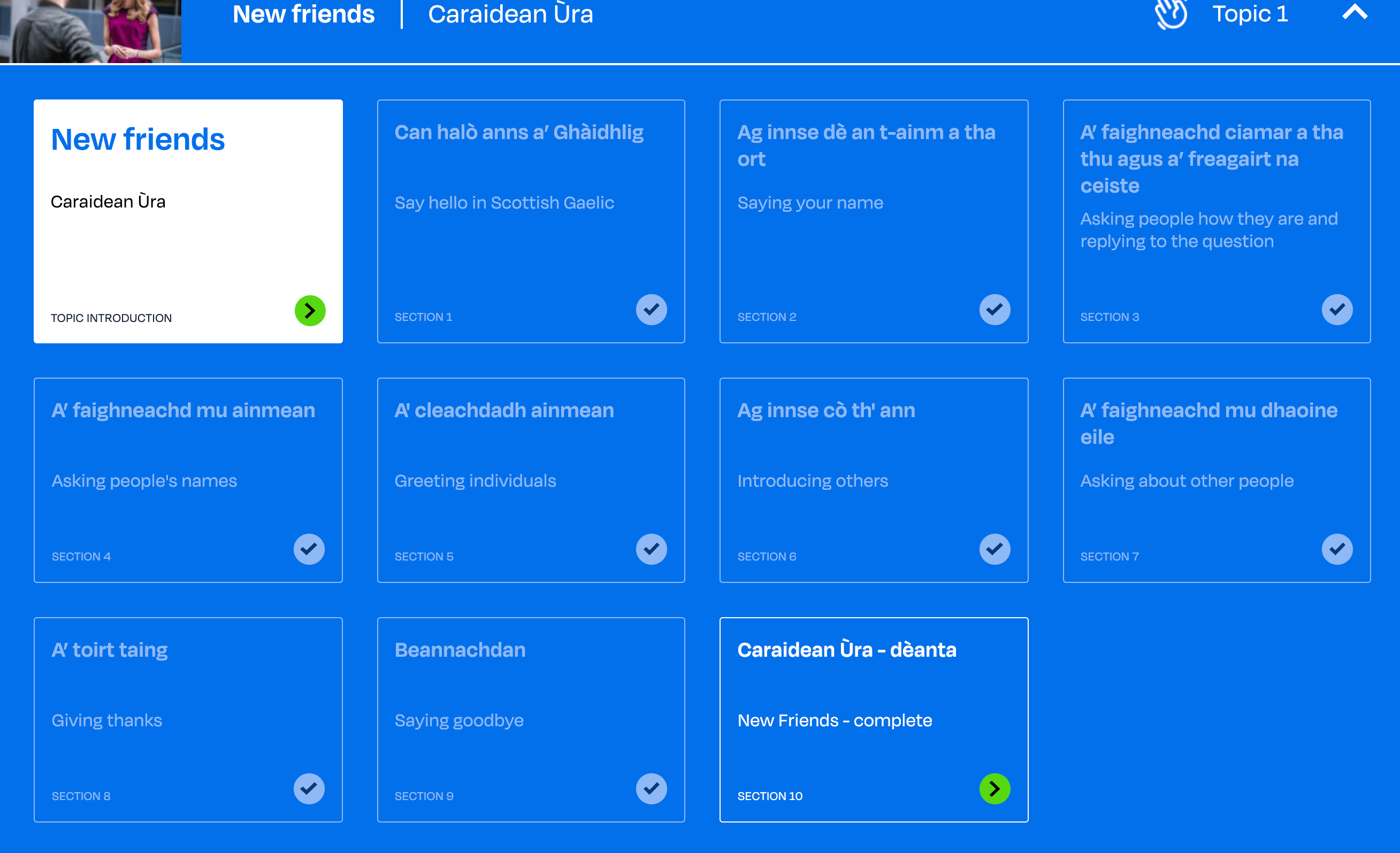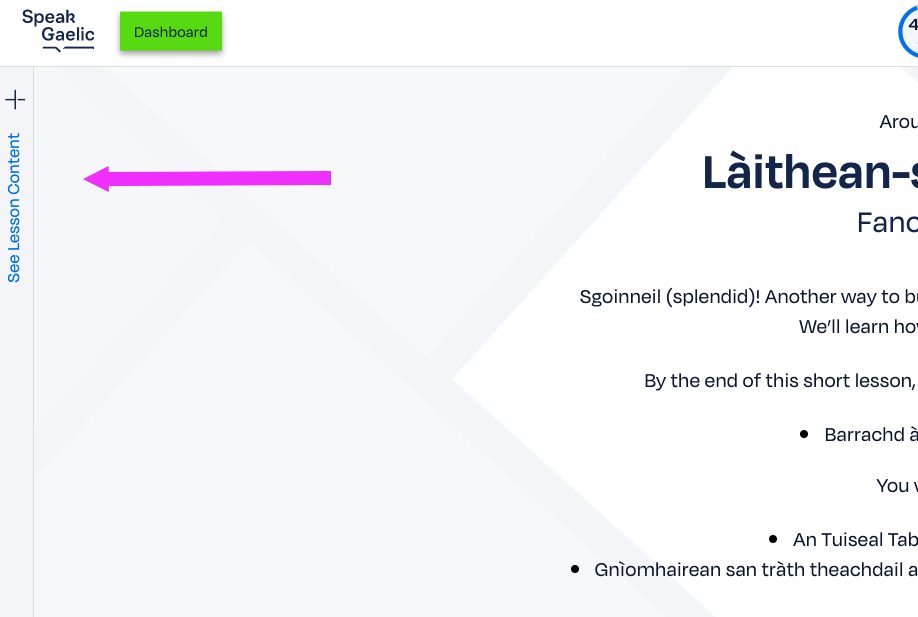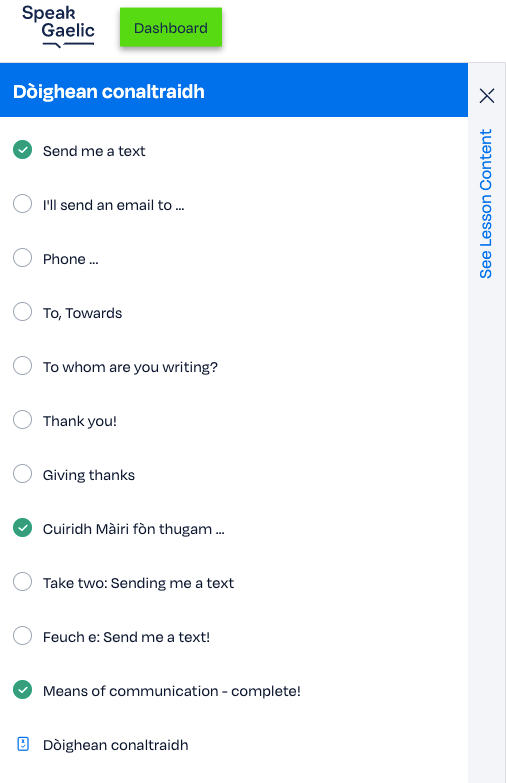Bilingual transcription: Reasabaidhean
Bilingual transcription: Recipes
Watch this clip where Joy gives us some of her useful tips and favourite phrases.
JOY
Leis gur ann mu chòcaireachd a tha sinn gu bhith a’ bruidhinn an–diugh, cumaidh sinn cùisean gu math
sìmplidh airson faighinn a dhol!
When we’re preparing food, we’ll sometimes start with
a recipe, reasabaidh. And as you can
see, it’s very similar to the English word.
To follow the recipe, bidh feum agaibh air,
you will need, bidh feum agaibh air grìtheidean, ingredients, grìtheidean. You may also hear the word tàthchuid being used for an ingredient, tàthchuid. Although I’d say that grìtheidean is the most commonly used.
When you’re cooking, tha thu a’ còcaireachd,
And that’s quite a general term, a’ còcaireachd but if you’re baking, tha thu a’ fuine, baking, a’ fuine.
Moving on to measurements and your dry ingredients can be measured in gramaichean, grams, or cileagraman, kilograms,
And liquids can be measured in mìleliotairean, millilitres, or in liotairean, litres.
When you have your ingredients gathered together, bidh thu a’ measgachadh, you mix them, mixing, a’ measgachadh.
However, if you’re making a dough, you’ll end up having to knead which is: a’ taoisneachadh, kneading, a’ taoisneachadh.
Now moving on to flavours, The Gaelic for salt is salann, salann but if you want to say something is salted or salty, it’s saillte, saillte.
But perhaps you wouldn’t want to make it ro shaillte, too salty, ro shaillte!
The Gaelic for sugar is siùcar, siùcar but to say that something is sweet, you use the word milis, milis but, again, overdoing it could end up making your dish ro mhilis, too sweet, ro mhilis.
Milis is closely related to the word we use for a dessert, mìlsean, mìlsean.
And now that we know that mìlsean is a dessert, if you were planning a menu, you would refer to your starter as a’ chiad chùrsa, the first course, a’ chiad chùrsa and your main course as am prìomh chùrsa, am prìomh chùrsa.
Before we listen to the next conversation, I’ll just share with you the Gaelic for the yolk and the white of an egg as they’re probably two of the most used grìtheidean. The yolk is buidheagan, buidheagan, and the white is the gealagan, gealagan.
As I’ve said before, not only is Gaelic such an expressive language, it’s also completely logical, sometimes!




